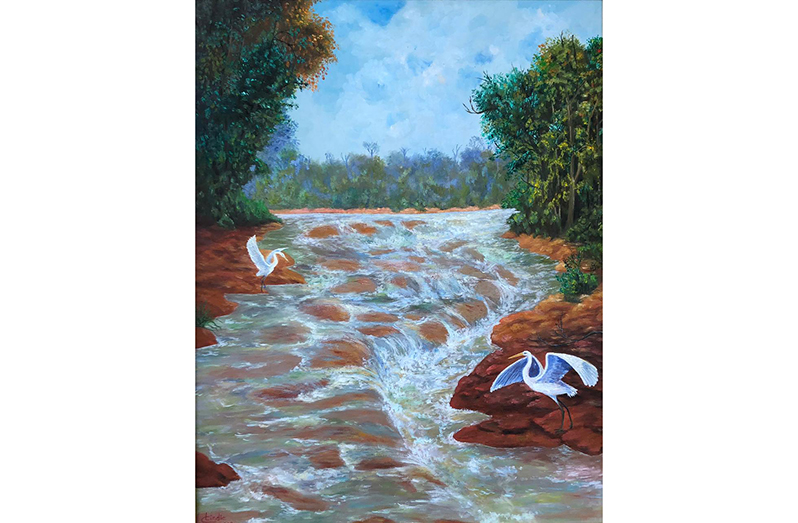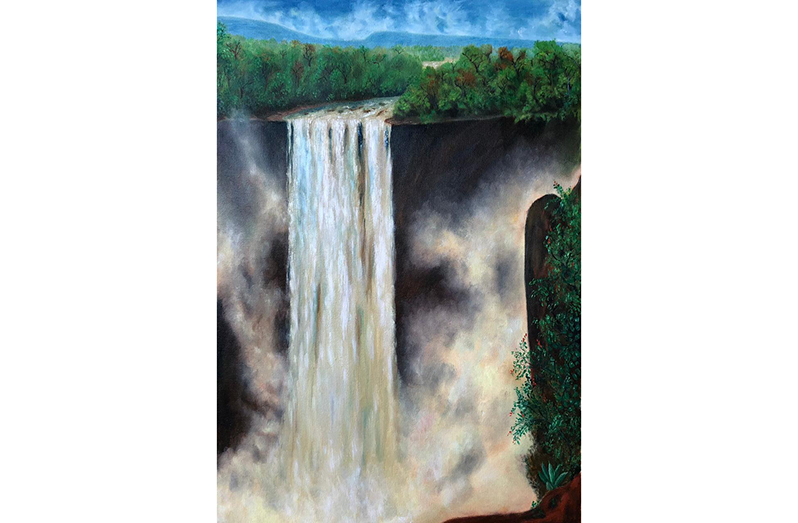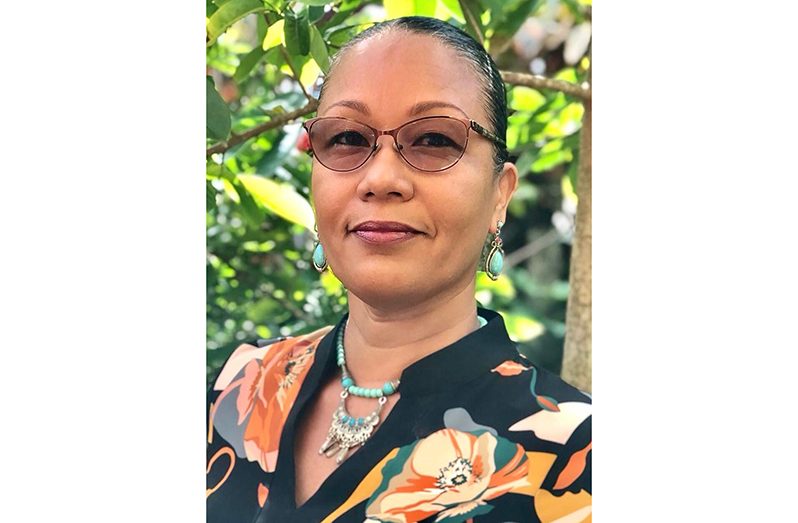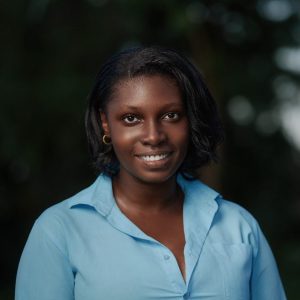ART in any way or form can be a means of expression, a form of storytelling, or a way for some people to share a part of who they are.
However, for indigenous writer and artist Cosmata Lindie, art is simply a part of who she is. The Kwakwani-born fiction writer has been recognised internationally for her unique literary flair. Her work has been praised for its immersive style that incorporates elements of life in Guyana as well as her traditional and cultural identity. Cosmata says that much of her work that is seen as traditional was not intentional but rather, like the rest of her work, simply an extension and expression of who she is.
There are few places that offer an upbringing as unique as one in the heart of the Berbice River. Life in the riverine community presented quite a few challenges. Without roads, Cosmata and her peers traversed the area by boat. “Growing up in the river was a bit more rural, I would say. We did not have roads, so we used boats to move most of the time. But it was still a good childhood,” she said.

Although simplistic, Cosmata’s childhood was the birthplace of her talent and where she would later garner inspiration for some of her best work. Her artistic ventures began with visual art, which initially started as a hobby, a simple piece she did in her youth. “I have always done art. Since I was young, art, drawing, and painting are things that I like,” she stated.
Cosmata’s art continued to blossom as she grew older, eventually making the move to New Amsterdam in Berbice. Visual art still fascinated her, and she continued to paint, although she pursued other ventures. “Something about visual art has always captivated me, and I think it’s something I was born with,” she said. Her step into writing came much later when she began with short stories in 2010. Cosmata describes her writing as ‘secular fiction’ – a unique blend of the mystical and magical stories that captivated her as a child and the incredibly beautiful surroundings she grew up in.
Since beginning her writing path in 2010, Cosmata has gained recognition from various institutions and people around Guyana and the Caribbean for her one-of-a-kind writing style that connects with people across the board.
As a painter, her recreation of Guyana’s breathtaking sceneries has made her a member of the Guyana Women Artists Association (GWAA) and the Berbice Art & Craft Collective (BACC). She has also participated in several art exhibitions in Guyana. In March 2023, she exhibited her work in Paramaribo, Suriname, as part of a joint Guyana and Suriname art exhibition to mark the launching of the third edition of the bi-national magazine Inside Guianame.
Her phenomenal writing has also gained traction, with her being longlisted in 2022 for the Brooklyn Caribbean Literary Festival’s Elizabeth Nunez Award for writers residing in the Caribbean and shortlisted for the 2023 Commonwealth Short Story Prize. Her short fiction was featured locally in the Sunday Stabroek (“The Birds” – 2019 and “Crossroads” – 2020).
Cosmata has been published internationally in adda (“Where the Winds Blow” – July 2023) and Doek! (“The Deer’s Tale” – December 2023). She also contributed to a Caribbean folklore-themed collection of short stories being published by the Trinidad and Tobago-based Caribbean Books Foundation, which is due to be released in the latter part of 2024.

Her most recent endeavour has been her contribution to this year’s Amerindian Heritage Month Art Exhibition. Her two pieces, “Taking Flight” and “Kaieteur Falls,” are among the highlights of the exhibition. “Taking Flight,” which captures a seemingly uniquely Guyanese sight, features two cranes beside a rapid river in Guyana, while “Kaieteur Falls” portrays one of the nation’s most majestic sights through the eyes of a creative Guyanese.
In every word of her writing and every stroke of her brush, Cosmata manages to bring the beauty of Guyana and Guyanese to the very forefront. Her indigenous culture is often a constant underlying theme as well. A lot of her work has what many have called cultural undertones, with most featuring people and places within the deeper, more remote parts of Guyana far from the capital city. This is not a conscious decision, says Cosmata. Although a proud Indigenous woman, she says that her work is simply how she sees the world and what she considers beautiful. “People have asked me about the cultural and traditional themes in my paintings and art, and to tell you the truth, it is not a conscious decision. It’s just who I am.” Her culture, she says, is just a part of who she is.



.jpg)








